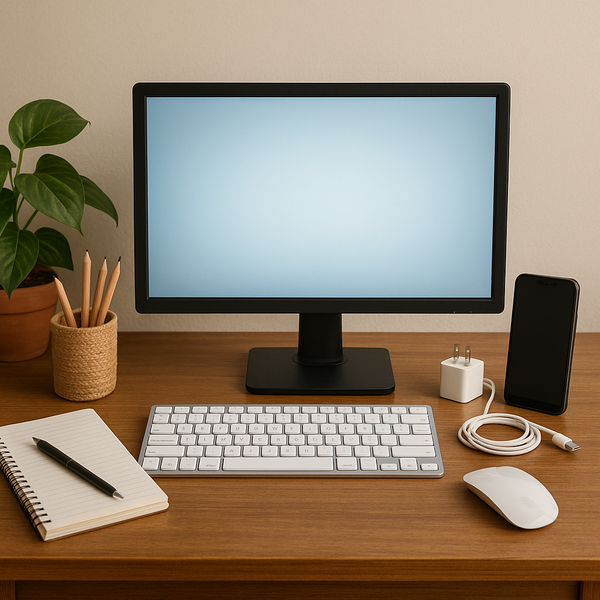
Stepping into the world of technology can feel overwhelming at first, but setting up your essential devices doesn't have to be a daunting task. This guide is designed specifically for beginners, breaking down the process into simple, manageable steps. Whether you're setting up a new computer, connecting to the internet, or getting your first smartphone ready, we'll walk you through the basics with clear, easy-to-follow instructions.
Choosing and Setting Up Your Primary Device
For most beginners, a computer or laptop is the central piece of technology. Deciding between a desktop computer and a laptop depends on your needs. Desktops offer more power for the price and are easier to upgrade, but they lack portability. Laptops provide the flexibility to work or play anywhere. When you get your new device, the first step is usually unboxing and connecting it. For a desktop, this involves plugging in the monitor, keyboard, and mouse to the correct ports on the computer tower. Laptops are simpler, often just requiring you to open the lid and connect the power adapter.
Once connected, power on the device. You'll typically be greeted by an operating system setup process. Follow the on-screen prompts to select your language, region, and accept terms and conditions. You'll need to create a user account, often requiring a username and password or a PIN. Choose a strong, memorable password. This initial setup might also involve connecting to a Wi-Fi network, which is crucial for accessing the internet and completing updates.
Getting Connected: Internet Setup Basics
Accessing the internet is fundamental to using modern technology. This typically involves a modem and a router. Your internet service provider (ISP) usually supplies these. The modem connects your home to the ISP's network, and the router creates a local network within your home, allowing multiple devices (computers, phones, smart TVs) to share the internet connection, often wirelessly via Wi-Fi.
Setting up usually involves connecting the modem to the internet source (like a cable outlet or phone line) and to the router with an Ethernet cable. Then, power both devices on. The router will broadcast a Wi-Fi network name (SSID). You'll need to find this network on your device (computer, phone) and connect using the Wi-Fi password, usually found on a sticker on the router itself. It's a good practice to change this default Wi-Fi password to something more secure and easier for you to remember through your router's settings interface, which you access through a web browser.
Connecting Peripherals: Printers, Speakers, and More
Peripherals are devices that connect to your main computer or device to add functionality. Common peripherals include printers, speakers, webcams, and external hard drives.
Printers can connect via USB cable or wirelessly via Wi-Fi. USB setup is straightforward: plug the printer into a USB port on your computer. Windows or macOS will often detect the printer and install the necessary drivers automatically. For Wi-Fi setup, you'll usually need to use the printer's control panel (if it has one) or a setup program on your computer to connect it to your home Wi-Fi network. Once the printer is on the network, your computer should be able to find and install it. You might need to download specific printer drivers from the manufacturer's website for full functionality.
Speakers often connect via a 3.5mm audio jack or USB. Simply plug them into the corresponding port. Bluetooth speakers require pairing: enable Bluetooth on your computer or phone, put the speaker in pairing mode (usually a button press), and select the speaker from the list of available devices on your main device. Webcams and external hard drives are typically plug-and-play via USB.
Essential Software Installation
Once your hardware is set up and you have internet access, installing essential software is the next step. This includes a web browser (like Chrome, Firefox, Edge, or Safari), which is necessary for browsing websites. Your operating system will come with a default one, but you can install others.
Antivirus software is crucial for protecting your device from malware and viruses. While Windows includes Windows Security, many users choose to install third-party antivirus programs for added features or different protection approaches. Be sure to download software only from official websites or trusted app stores to avoid downloading malicious programs.
Productivity software, such as word processors (like Microsoft Word, Google Docs, or LibreOffice Writer) and spreadsheet programs (like Microsoft Excel, Google Sheets, or LibreOffice Calc), are often needed for tasks like writing documents or managing finances. Many modern operating systems and web services offer free basic versions.
Securing Your Devices and Accounts
Security is a non-negotiable part of tech setup. Beyond antivirus software, set up strong passwords for your devices and online accounts. Consider using a password manager to keep track of complex passwords. Enable two-factor authentication (2FA) whenever possible; this adds an extra layer of security requiring a second verification step (like a code from your phone) in addition to your password.
Keep your operating system and software updated. Updates often include security patches that protect against newly discovered vulnerabilities. Be wary of phishing attempts – emails or messages that try to trick you into revealing personal information. Always double-check the sender's email address and the legitimacy of links before clicking.
Setting up your initial tech doesn't have to be a source of frustration. By following these basic steps – from choosing your device and connecting to the internet to adding peripherals and installing essential software while keeping security in mind – you can build a solid foundation for using technology effectively and safely. Remember that it's okay to take your time and ask for help if you get stuck.

